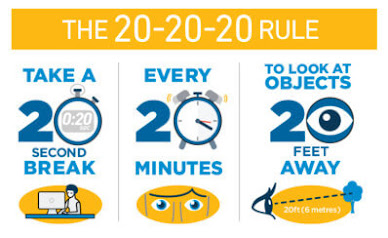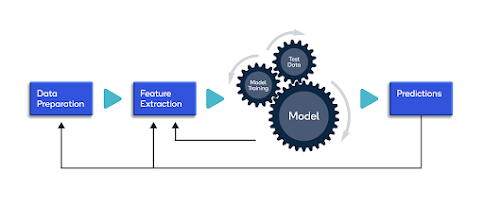%20(1).png)
Saying no can feel like a daunting task, especially when you want to avoid hurting someone’s feelings or coming across as rude. Whether it’s declining a request from a colleague, turning down a social invitation, or saying no to family obligations, it can leave you feeling awkward or guilty. But there’s a technique that makes it easier to deliver your message gracefully: The “Sandwich” Approach.
This method is a polite yet firm way to say no while maintaining positive relationships and respecting your boundaries. Let’s dive into how it works and why it’s a game-changer for setting limits without the guilt.
What is the “Sandwich” Approach?
The “Sandwich” Approach involves delivering your no in a structure that softens the impact:
1. Start with Positivity: Begin with something kind or appreciative to set a positive tone.
2. Deliver Your No: Clearly state your boundary or decision.
3. End with Positivity: Wrap up with another kind or encouraging remark to leave the conversation on a positive note.
This method is widely used in professional and personal settings, not just for saying no, but also for delivering negative feedback in a constructive way. By starting and ending with positive remarks, the negative feedback (or in this case, the "no") is cushioned, making it more likely to be received without defensiveness. Similarly, when saying no, this approach helps the other person feel acknowledged and respected while making it easier for you to assert your boundaries.
Why Does It Work?
- Softens the Blow: The positivity cushions your no, making it easier for the other person to accept.
- Maintains Relationships: It shows you value the person and their request, even if you can’t fulfill it.
- Reduces Guilt: By balancing your no with kindness, you’re less likely to feel bad about your decision.
For Teenagers and Young Adults
Saying no can be especially challenging for teenagers and young adults, as this is a time when social acceptance and peer relationships feel more important than ever. Whether it’s declining an invitation to a party, resisting peer pressure to try something you’re uncomfortable with, or saying no to extra responsibilities that overwhelm your school or college workload, it’s easy to feel like you’re letting others down.
But the truth is, setting boundaries is an essential life skill. The “Sandwich” Approach can help you say no without jeopardizing your relationships or feeling guilty. For example, if a friend invites you to a party but you need to focus on an assignment, you could say: “Thanks for thinking of me—it sounds like so much fun! I have a big assignment due tomorrow, so I need to stay home and work on it. Let’s plan something together next weekend!” This approach shows your friend you care, while also staying true to your priorities. Remember, it’s okay to prioritize yourself, and learning to say no now will only make you stronger in the future.
How to Use the “Sandwich” Approach
Here’s how you can apply it in different situations:
1. At Work
Scenario: A colleague asks you to take on extra tasks.
Response:
“Thank you for trusting me with this task.”
“Unfortunately, I’m at capacity with my current workload and won’t be able to take this on right now.”
“Let me know if there’s a way I can support you in a smaller capacity.”
2. With Friends
Scenario: A friend invites you to an event, but you’re too drained to attend.
Response:
“That sounds like a great event, and I’m so glad you thought of me!”
“I’m feeling a bit overwhelmed and need some downtime, so I won’t be able to make it.”
“I hope you have a wonderful time, and let’s catch up soon!”
3. For Personal Boundaries
Scenario: Someone asks you for a favor that you’re uncomfortable with.
Response:
“I value our relationship and always want to help when I can.”
“However, this request is outside of what I’m able to do right now.”
“Thank you for understanding, and I hope you find the help you need!”
4. When Declining Financial Requests
Scenario: A friend or family member asks to borrow money.
Response:
“I’m really grateful that you feel comfortable enough to ask me for help.”
“Unfortunately, I’m not able to lend money at the moment.”
“I’d be happy to help in other ways if I can, like brainstorming solutions or connecting you with resources.”
5. When Turning Down Gifts or Offers
Scenario: A friend offers you a gift or gesture you don’t feel comfortable accepting.
Response:
“That’s such a thoughtful gesture, and I truly appreciate your kindness!”
“However, I don’t feel comfortable accepting this gift/offer right now.”
“Your thoughtfulness means a lot to me, and I’m grateful for our friendship.”
6. Declining to Share Your Notes or Work
Scenario: A classmate asks to borrow your detailed notes, but you’re uncomfortable sharing them.
Response:
“I’m glad you trust my notes; that’s really encouraging!”
“I’ve put a lot of effort into them, and I prefer to keep them for personal use.”
“I’d be happy to help you with specific questions or topics you’re struggling with!”
7. Saying No to Sharing Contact Information
Scenario: Someone asks for a friend’s or colleague’s contact information, but you’re not comfortable sharing it.
Response:
“Thanks for trusting me to connect you with them!”
“I’d prefer to respect their privacy and not share their contact information without their permission.”
“I can pass along your details if you’d like, and they can reach out if they’re interested!”
Tips for Mastering the “Sandwich” Approach
1. Be Genuine: Ensure your positive remarks are sincere to avoid sounding dismissive or insincere.
2. Be Clear: Don’t leave room for ambiguity. A vague response like “I’ll try” might lead to miscommunication.
3. Practice: The more you use this technique, the easier it becomes to deliver your no with confidence.
Why It’s Empowering
Using the “Sandwich” Approach helps you take control of your time and energy without sacrificing kindness. It empowers you to set boundaries in a way that feels good to both you and the other person.
Saying no isn’t about rejection—it’s about honoring your limits and making thoughtful decisions about how you spend your time. The “Sandwich” Approach makes this process smoother, allowing you to protect your well-being while maintaining positive relationships.
A Personal Note
Learning to say no isn’t about shutting people out or avoiding responsibilities. It’s about being intentional with your time and energy. It’s about understanding that you can’t pour from an empty cup—and that taking care of yourself isn’t a luxury, but a necessity.
By using the “Sandwich” Approach, you can assert your boundaries with kindness and confidence. So, the next time you’re faced with a tough request, remember this technique—it’s a simple yet powerful way to honor your needs while staying true to your values.
Have you tried the “Sandwich” Approach? Share your experiences in the comments below. Let’s learn from each other! 😊













%20(1).png)

